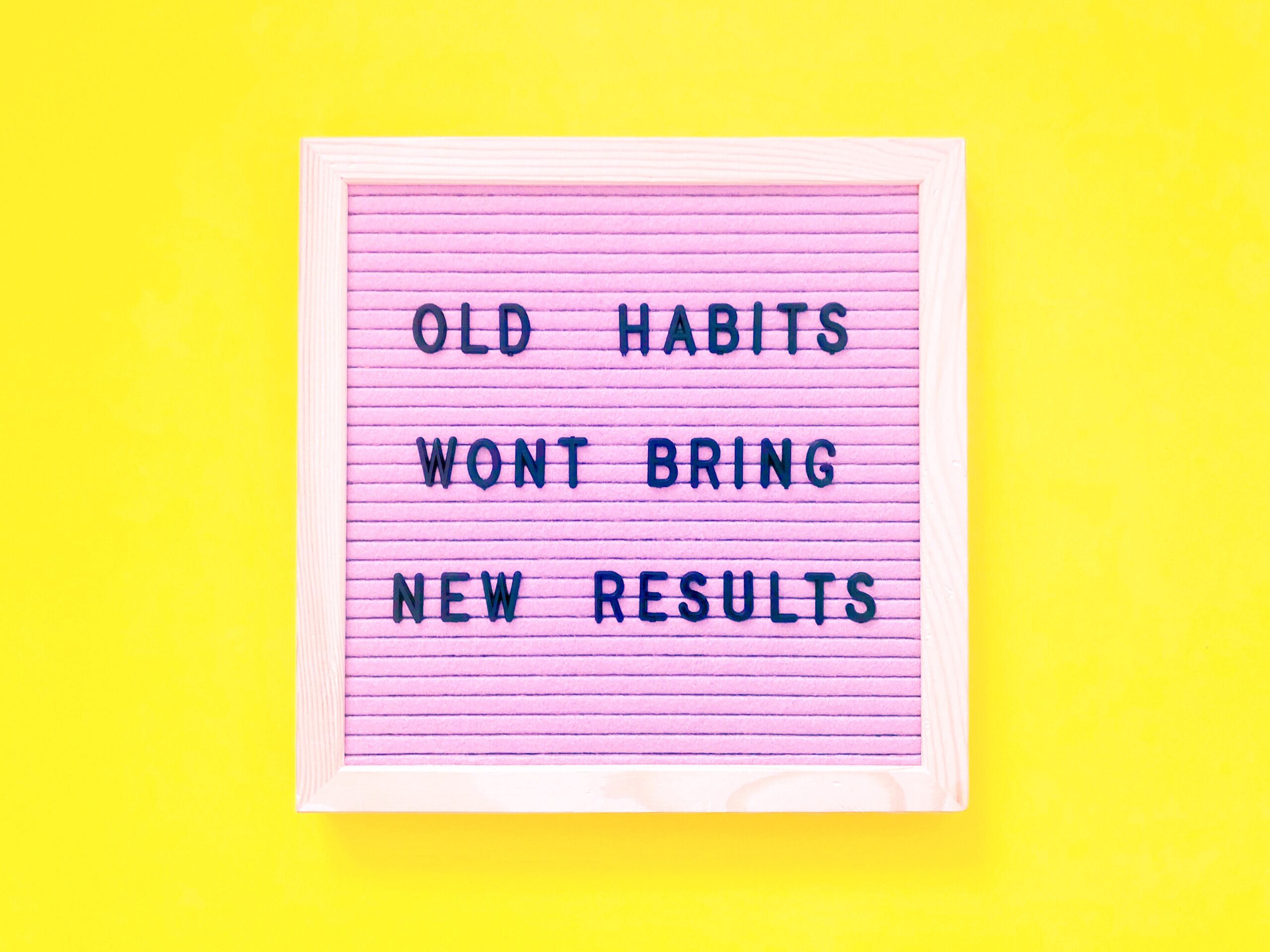
George Carlin

"I put a dollar in the change machine. Nothing Changed!."
What Are THE BIG 5?
You can think of your overarching personality traits as 5 major categories. They are easy to remember by the acronym OCEAN.
- Openness to experience (our willingness to try new things)
- Conscientiousness (our capacity to attend to detail, stick to a plan and act with integrity)
- Extraversion (where our energies are focused: internally or outwardly)
- Agreeableness (our interest and empathy for others)
- Neuroticism (how much we are consumed with internal thinking of and about ourselves, worry)
These 5 traits are partially responsible for your personality at any given time. Consider how your moods ebb and flow just as waves of an ocean do, each wave depending on the pull of the tide, or for example the pull of your hunger.
Hangry anybody?

Discovering where you measure in each of THE BIG 5 can help enlighten you on how you generally navigate the obstacles and victories of life. I’ll expand on these BIG 5 a little bit more in part two of this series. But for now, just being aware of them is enough to remove obstacles and evoke change.
To get a better sense of what might be blocking your personal transformation, I’d like you to roughly estimate where you might fall in each of these traits. I want you to take a quick note of where you measure in each category, now.
Comfort Scale for OCEAN
(Where 1 is LOW and 10 is High)
Openness
Conscientiousness
Extraversion
agreeableness
neuroticism
When you consider where you factor in among each of THE BIG 5 Personality Traits, you can narrow your focus down, and select an approach to transformation that is more likely to ensure you stick with it and achieve success! This little assessment is just a starting point to help you generate some awareness of these BIG 5 and how they have influence over your every decision. I will take you through a deeper dive in the upcoming posts of this series. For now, you may want to jot down where you think you measure and bring that along with you to the next post. Let’s keep going, though, with a bit more background information.
What Does THE BIG 5 Have to Do With Personal Transformation?
As a young teen, Patrice’s smoking habit was birthed from a strong desire to hang out with a group of her friends outside the cafeteria at lunchtime each day. At that time in her life, she was cultivating a certain willingness to try new things. She had an interest in fitting-in with others, and was readily available to accept the naturally built-in reminders to smoke cigarettes at lunchtime each day. The environmental stimulus of the school bell that let kids out of class for lunch, the angle of the sunlight hitting her eyes as she exited the cafeteria door, the excitement of greeting her friends were all accepted by her Big 5, thus installing and reinforcing this habit.
As Patrice subtly introduced her BIG 5 to the act of smoking, she managed to persuade them by showing them how good it felt to experience that buzzy feeling, thus energizing her Openness to try new things. How wonderful it was to feel like she was part of a group, engaging her Extraversion. How nice it felt to have a regular place to be each day at a certain time, engaging her Conscientiousness. She even felt good when she caught a glimpse of her reflection or even just thought about how she looked holding a cigarette in her hand, appealing to her Neuroticism trait.
As she conducted the act of smoking that first time, she demonstrated what THE BIG 5 could expect once they on-boarded this habit. THE BIG 5 took a vote and decided that a smoking habit would provide various benefits and welcomed this new habit, through an on-boarding orientation. Over a short time, THE BIG 5 worked in alignment to automate the habit…leveraging all those handy, built-in reminders to smoke, that I mentioned above. Years and years went by where Patrice was smoking enough to believe it was part of her identity. Now that Patrice wants to quit smoking, she can cut her efforts in half by unraveling that old habit and re-negotiating a newer, healthier behavior with THE BIG 5.
Thou Doth Protest Too Much
The way people typically go about breaking a habit entails disrupting the cozy comforts that THE BIG 5 has been enjoying on automation. When you just take something away without replacing it with something else, that disruption causes world-class upset, either in the form of resentment or anger!

So, disrupting strongly held automatic habits builds a natural resistance because it challenges the sense of comfort and ease. Just think of a baby whose caregivers are trying to wean her off a pacifier. You have to replace that pacifier with a different activity or intriguing thing. Otherwise, you have a poor baby crying loudly and with emotion, because you disrupted her comfort. (It’s given the name pacifier for a reason!) You gave nothing in return to make up for the thing you stole and now there is an obsession with getting it back and figuring out how to keep it, forever! This is similar to how one or more of your BIG 5 will respond to any habit or pattern that all of a sudden is expected to disappear.
When you introduce a change to THE BIG 5 or the 5 different branches of government that are governing “The United States of You”, they are each going to react to the proposal differently.
What if, for instance, you are wanting to start a habit of growing your courage by riding the world’s most thrilling roller coaster rides. Openness and Extraversion are saying, “Hell ya! This is so much fun! Why didn’t you think of this earlier?”. Whereas Agreeableness, Conscientiousness, and Neuroticism are in opposition and think you are out of your mind. They are negotiating a standoff with the other two. The latter three are out of their comfort zone! They don’t believe they can keep you comfortable or safe. You may proceed with building this habit, but you are likely to get resistance…maybe in the form of headaches, tummy aches, allergies. So it’s best to land at a consensus. Certain “members” of THE BIG 5 may need resources to develop courage or recognizing comfort and safety items in place.
So, now let’s talk a little bit about comfort. As I mentioned before, feelings of comfort or discomfort naturally surface as we proceed to shift our habits and behaviors. All feelings of comfort or discomfort are intrinsically hosted in both the body and narrated (at varying degrees of loudness!) in the mind. When you are feeling good, your body sends “happy chemicals” to communicate that this experience is a good one and how often you might want to repeat it. Your Unconscious mind receives the communication and begins to set the new desired experience on automation through processes that involve your brain. Those “happy chemicals” are really hormones or “chemical messengers” that send communications (like a telegram) to the Unconscious Mind and then the Unconscious Mind takes that “telegram” and turns it into a set of instructions that inform the network of neurons in the brain how to organize or reorganize. This is the process of wiring or re-wiring the brain.
You can think of the process this way: Imagine that whatever experience you are having, at any given time, is always being recorded, and if it’s really relevant or important it is being reported on. Pretend that a microscopic J. Edgar Hoover lives inside your DNA somewhere and is tasked with the job of spying on you, looking for leverage for and against you. And as he records your every move, he sends the really important messages to “the President” through a network of microscopic pneumatic tubes that travel all up and down the body (hormone messengers). When “the President” receives “Hoover’s” messages, she has to consider how to inform and instruct the “troops” (which you can imagine are the neurotransmitters in the brain). The instructions to the troops are nearly almost the same! Generally, the instructions are always about building pathways. Instructions for starting a new pathway, doing maintenance, setting up detours, and shutting down old unused pathways…it’s all “transportation” based because your habits and behaviors, your responses to internal and external stimuli, run along those pathways and become more or less efficient and speedy through repeated use.
So, take for example, a 10-year-old girl who recently learned that her parents are going to get divorced. She feels a flood of emotions: sadness, worry, and anger. Her internal “Hoover” records all of them but reports only the Big Important ones to “the President”. Sadness, worry, and anger are thoughts that carry weight! Meanwhile, this 10-year-old’s loving parents decide to have her stay with her grandparents for a couple of weeks while they sort out details. And while she stays those few weeks, grandma is making big efforts to lift her up by giving her lots of TLC and by baking lots of delicious sweet treats for her. This 10-year-old girl feels the love every time she watches grandma baking sweet treats, smelling the blissful aromas, all while talking about things that are meaningful and interesting to her. The 10-year-old’s “Hoover” records what is liked about these pleasant interactions with grandma, sends the important messages to “The President” and “The President” decides it’s important to have a new, super-fast “highway” installed, as the quickest way to travel from sad to glad and commemorate grandma’s baked goods. And in the little girl’s subconscious grandma’s sugary treats = Grandma’s TLC, which all equate to love and happiness. Emotional tracks are laid down, allowing the wheels on this train to pick up unimaginable speed so that the next time this girl feels sadness she mindlessly finds herself reaching for a sugary treat because experience shows that sugar has uplifted her in the past.
How to Empower Your Approach to Change
As individuals explore methods to break unwanted habits or discontinue unwanted emotional patterns, they often overlook the impact that their levels of comfort hold over their ability to navigating through such personal transformation. And so, when embarking upon a transformation journey, it’s worth it to conceive a plan, like a sort of map. This can help you navigate around resistance and discomfort, even when changing what may seem like the most mundane habits in your life. To do that, you’ll first want to take stock of how your BIG 5 are going to cooperate with, or sabotage your efforts. Where we reside on each of THE BIG 5 scales can show us a way to look at their role in our ability to make a change. We can look at each of these Big Trait categories, see where our comfort levels fall, and predict how we might adapt to change and what further tools may be necessary to achieve success.
Take Action!
If you have assessed where you measure on each of THE BIG 5 (using the scales above) then you’ve already completed the first step in this process. If you’ve jumped ahead, and that’s perfectly alright by the way, go back and spend a few moments noodling where you measure now. Jot down your numbers and bring them along to the next “episode”. Allow yourself to continue to think about where you measure in THE BIG 5 as you engage in your day-to-day or with other people.

I hope this article has helped shine some light on those challenges you face when committing to make positive improvements in your life. In my next post in this series, I will further expand upon these traits and their governing style. I will also explain how you can conduct the internal check-ins, proceed with any negotiations, and reach for additional tools where needed. Until then, enjoy becoming familiar with your BIG 5. Keep a neutral but watchful eye on how they “govern” you. We’ve got more to cover next time, and you will want to bring this data.




